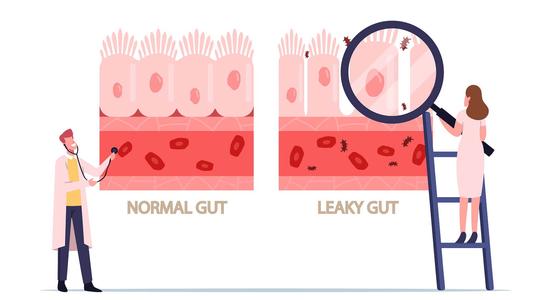See all "Gut Yeast" Section Topics
- Summary & Introduction
- Gut Yeast Symptoms
- Candida May Travel Through Intestinal Lining
- Canditoxin and Candida Metabolites
- The Cycle of Yeast Growth, Infection, and Antibiotics
- Candida and Gut Diseases
- Personal Stories Showing Gut Candida’s Effects
- How to Naturally Cure Gut Yeast Infections
- A Natural, 12 Hour Yeast Infection Cure
- Article Sources
- Video Explanation of Topic
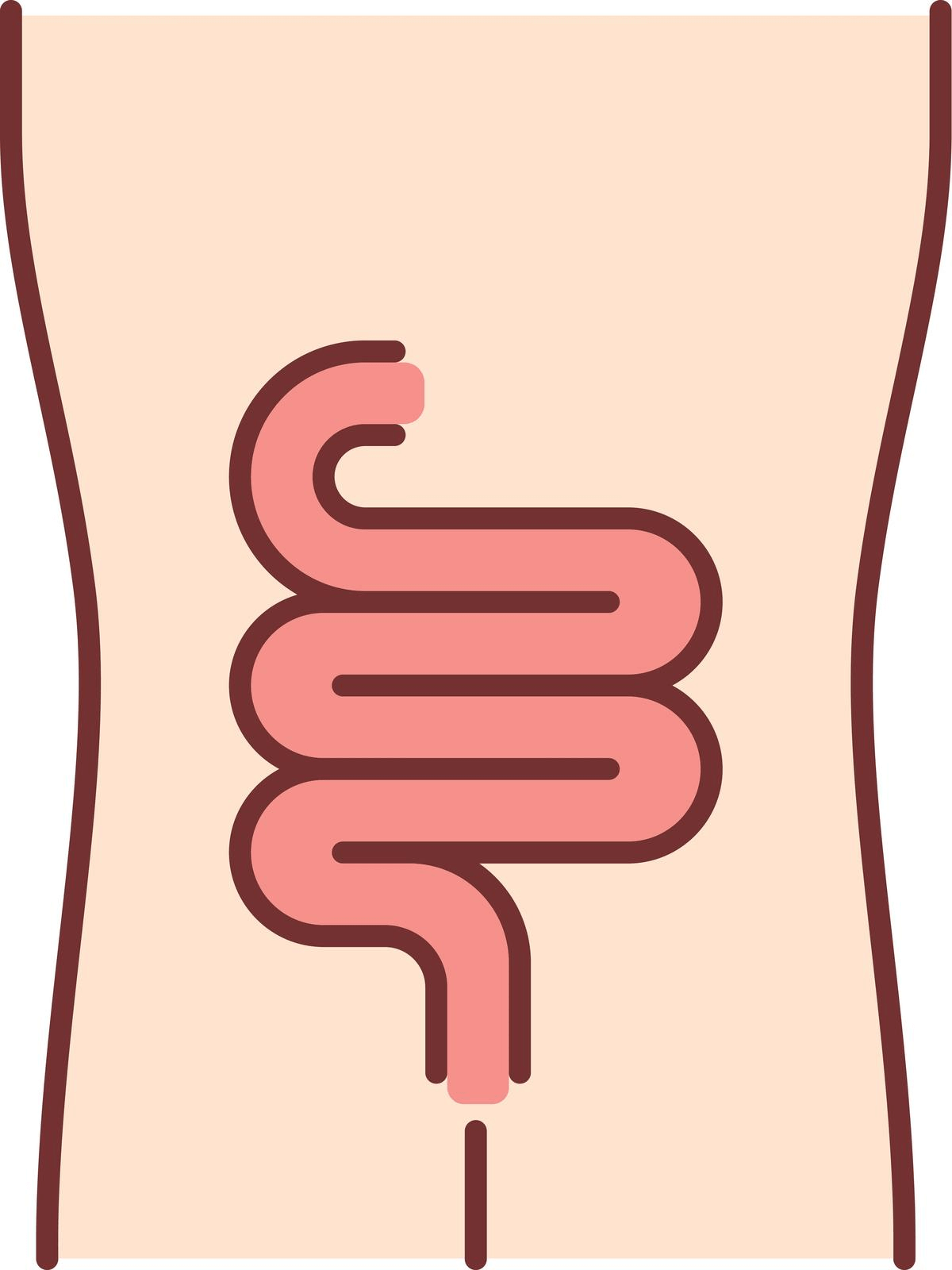
A gut yeast infection, is perhaps, more common than most people would think. Candida, the genus of yeast that is responsible for infections, normally lives commensally in nearly every human’s gut microbiota.
Research published in the Journal of Medical Microbiology [13.1 (1980): 45-56] shows that about half of the dry weight of human feces is bacteria. That may sound a little shocking; however, it shows you how packed with bacteria a healthy intestinal system is.
When this bacteria gets attacked by broad spectrum antibiotics, it greatly alters the balance of power in the gut! Yeasts, which are not affected by antibiotics, find themselves alone and surrounded by an abundance of space and food to consume.
And yes, nearly all humans have some Candida in their gut! Consequently, they feast and overgrow rapidly. The result then becomes a gut dominated by Candida.
The species of Candida that causes most cases of Candidiasis—about 80% of them—is Candida albicans; and, it is safe to assume gut colonization is largely by Candida albicans (Fidel, et al.; 1999).
In the past, before the advent of antibiotics, gut yeast infections were not a concern. But today, with so many people utilizing various antibiotic drugs, yeast have become a serious concern. Immune diseases or stresses, that impair immune system function, can also give Candida the ability to overgrow.
With the advent of radiation therapy, and other drastic medical procedures, Candida has also become more prominent. Diseases like the human immunodeficiency virus (HIV) also can allow Candida to spread through the body; and sometimes prove fatal.
In some people, they have so much yeast in their intestines that they suffer from bouts of drunkenness after they eat. Candida is a yeast; and, yeast produce alcohol as a byproduct of their metabolic processes.
Dr. William Crook, in his book The Yeast Connection, has a short chapter dedicated to “drunken diseases;” a condition which causes people to randomly get drunk. This drunkenness, is due to their being a significant amount of alcohol being produced in the digestive system. The Candida, in this area, can rapidly transform sugars into alcohol.
In the chapter, he tells a story about one man with this condition, who had a run in with the law over drunk driving—yet he had drank no alcohol at all!
A 1/2 Day & Yeast is Gone!
Linda Allen suffered from yeast infections for years. Through researching natural medicine & Candida, she found an efficacious solution!
Linda is one expert you want on your side! Let her show you how to get rid of a superficial yeast infection in just 12 hours; AND, keep it gone!
A 60-day, 100% money back guarantee is provided.
Visit Official Site!Gut Yeast Symptoms
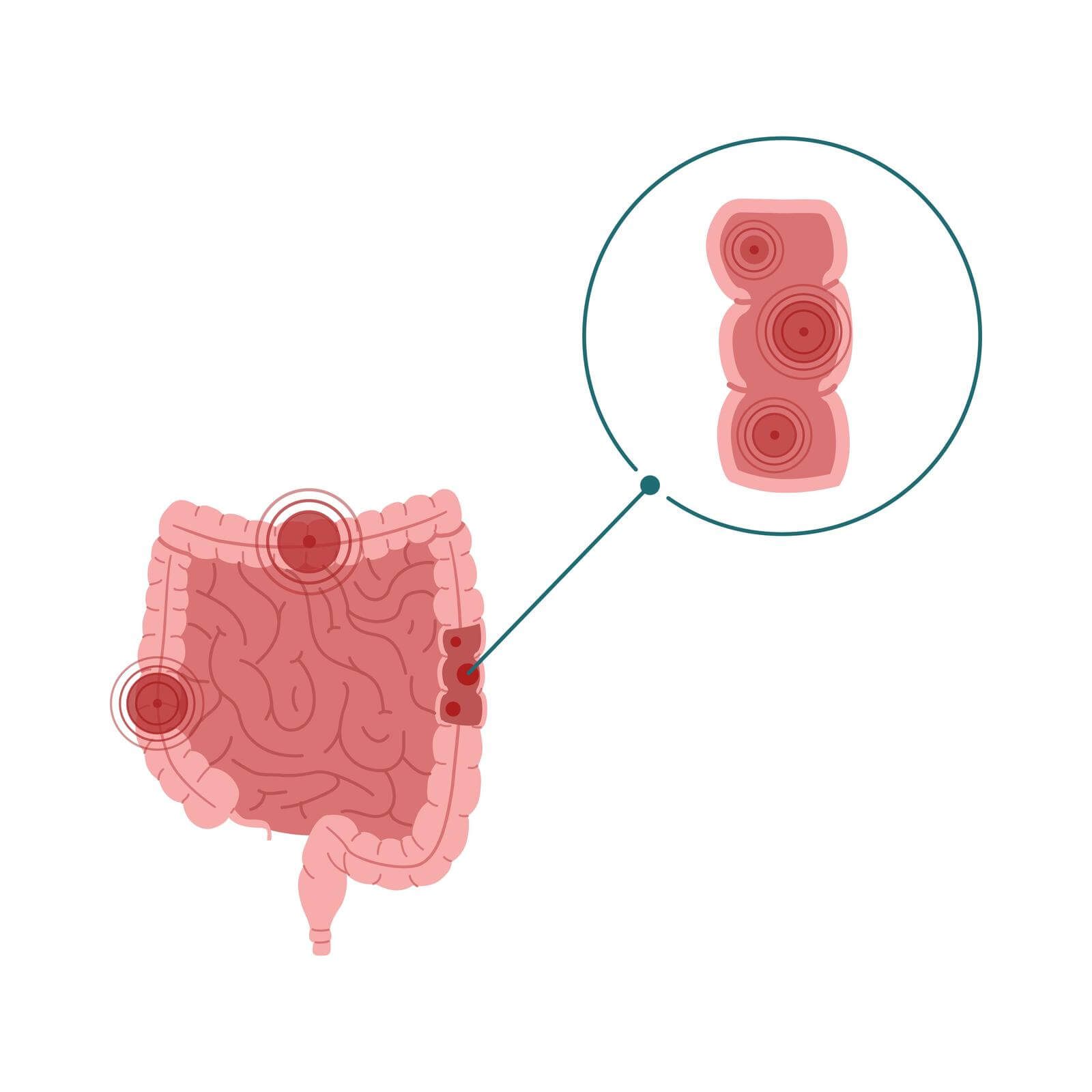
You may not be one of the rare victims of drunkenness via Candida; however, the yeast in your gut does produce some alcohol, and other toxins, that can be a real detriment to your health. If you you seem to always feel bad, and always seem to be sick; Candida in your gut may be the source of these problems.
Some of the following symptoms can occur when you have too much yeast in your body; see if any seem like what you are experiencing:
- You feel lethargic or tired
- You seem to feel depressed frequently
- Poor memory
- Feelings of unreality
- Lack of ability to concentrate
- You frequently get headaches
- You’re sensitive to tobacco smoke, perfumes, and other chemical odors
- You get inappropriately drowsy
- Muscle weakness
- Numbness or tingling sensations
- You seem to never stop getting vaginal yeast infections
- You have persistent digestive problems (gas, diarrhea, heartburn, abdominal pain, etc.)
- Symptoms seem to flare up on damp days or in moldy places
- Symptoms get worse when you eat highly glycemic foods
- Generally, you just feel “lousy” way too much!
- (Gut Yeast Symptoms Source: Dr. William Crook’s The Yeast Connection)
Eliminate Bacterial Vaginosis & Vaginal Odor
Jennifer O’Brien is one prominent expert on BV that knows how to get rid of vaginal odor. BV is a common infection that you don’t have to put up with.
Jennifer will show you how to naturally eliminate vaginal odor in just 3 days.
A 60-day, 100% money back guarantee is provided.
Visit Official Site!Candida May Travel Through Intestinal Lining
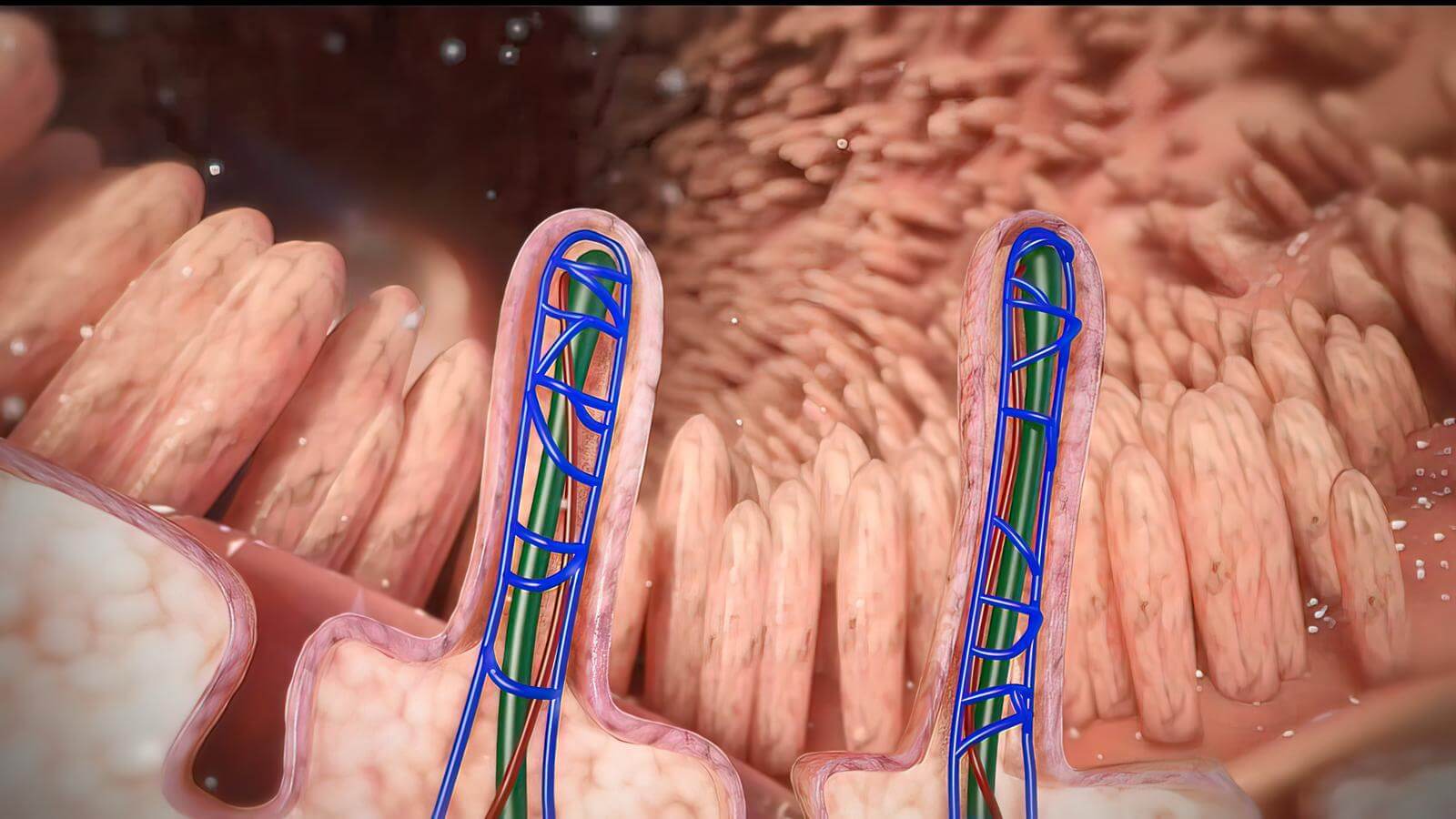
Candida is so capable at invading a host when it overgrows, it likely can actually cross the intestinal mucous membrane barrier and enter the bloodstream. This means, that the smaller toxic molecules Candida produce, also likely enter the bloodstream.
If the whole yeast can penetrate this barrier, what does that say about the smaller toxins yeast produce? Another capability of many Candida species, that may allow them to penetrate the intestines, is the ability to grow germ tube hyphae.
By growing germ tubes into the mucous membranes of the intestines, they can effectively start drilling holes into your body’s tissues. These holes may be a source of inflammation which further exacerbates the damage to the intestinal lining. The yeast responsible for 80% of Candida infections, Candida albicans, grows germ tubes.
Consequently, the vast majority of the yeast in people’s guts is probably germ tube growing Candida albicans.
One study, shows Candida’s penetartion of the intestinal wall, is likely how Candidemia (Candida in the blood stream) can start. The study was published in the Journal of Hospital Infection [72.1 (2009): 9-16]. The study took samples of the strains of Candida, that were infecting the blood, and compared them to the strains of Candida in the digestive tract and other areas of the body.
The study found, that 19 out of 25 patients with Candida albicans Candidemia, had matching strains of Candida albicans in their blood and rectum. This suggests that the yeast migrated from the rectum to the blood stream through the intestinal wall.
Candida albicans can grow long hyphae and burrow into mucous membranes—possibly even penetrate deep enough to enter the bloodstream. The study’s authors had this to say about their findings:
Our findings suggest that GI tract colonisation is the source of C. albicans candidemia, as a high proportion of patients had rectal and/or oropharyngeal colonisation with the same molecular clone that caused candidaemia. In an animal model, GI tract colonisation, mucosal invasion and bloodstream spread were the most common route of endogenous infection.
Journal of Hospital Infection [72.1 (2009): 9-16]
The chart below was taken from the same study. As you can see, many different sites on the body contained Candida strains that matched the strains found in the patient’s blood.
As the chart shows, of the 26 patients with Candida albicans, 25 (or 96%) of them had a matching strain at one of the sites investigated by the researchers. The chart below details the study’s findings.

Clair Goodall: Author & Nature Lover
Clair Goodall is a bee-obsessed natural medicine convert from Minnesota. She is one expert you might want to know more about!
Clair will help you protect you and your family from toxic products and chemicals and help you discover solutions from nature.
Also, Clair’s book is backed by a 60-day, 100% money back guarantee
Visit Official Site!Canditoxin and Candida Metabolites
According to the late pioneer of yeast related health issues, Dr. William Crook, Candida can drastically affect your body. Dr. Crook states that when Candida overgrows in the digestive system, toxins created by the yeast begin to seep into the bloodstream and disseminate through the entire body.
These toxins are known as Canditoxins; and, can cause allergic reactions and weaken the immune system. The reaction in the body is similar to anaphylactic shock. The allergic response to these toxins can cause a wide array of symptoms.
A study, published in Contributions to Microbiology and Immunology [4 (1976): 77-85], stated that Candida albicans created high and low molecular weight toxic substances. In the study, the researchers suggested that these toxins can work as immunosuppressants—working to impair the host’s cellular mechanisms for immunity.
These substances were able to assist Candida colonize its environment. It is also suggested that other Candida species also create Canditoxins; thus, it is possible Candida albicans is not the only yeast which creates such toxins.
It would make sense, that if Candida organisms themselves can penetrate the mucous membranes of the digestive system, and enter the blood, it will be easier for the toxic molecules—produced by the yeast—to infiltrate the blood.
Dr. Crook, in his books, often speaks of the wide array of symptoms these toxins can start to instigate. Feeling tired, feeling sick all over, memory loss, feeling foggy, digestion problems, and recurrent vaginitis are all some of the things digestive system yeast overgrowth can cause.
The Cycle of Yeast Growth, Infection, and Antibiotics
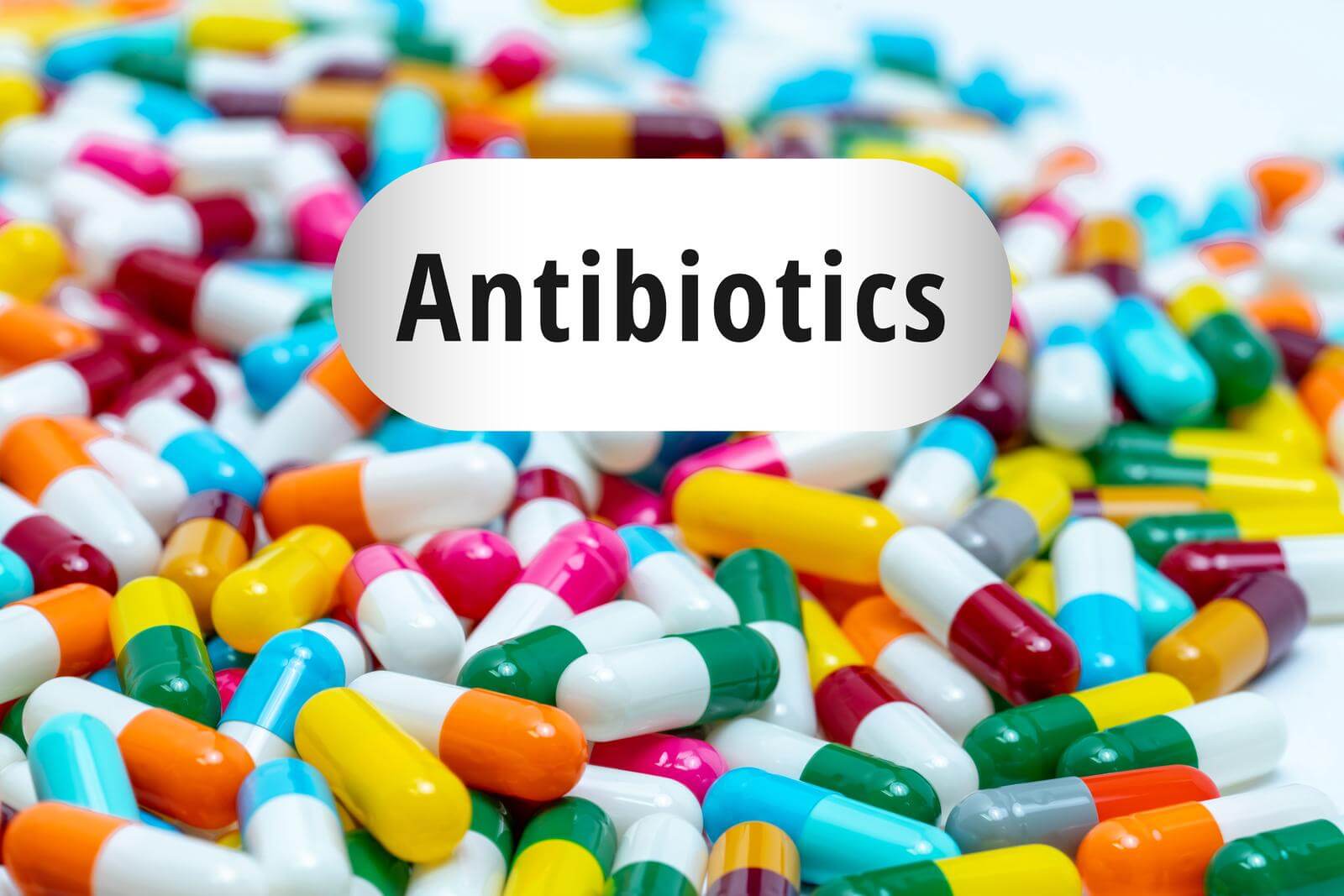
The toxins created by yeast, can also pave the way for other bacteria to infect various parts of the body. Once Canditoxins and ethanol, produced by the yeast, weaken the immune system; bacteria can start to infect various areas of the body. A frequent course of action, taken by physicians, is to prescribe antibiotics for these bacterial infections.
This, in turn, wipes out Candida’s natural probiotic competitors in the digestive system and vagina. The result is, more yeast overgrowth. Next, the expanding colonies of yeast produce more toxins; further weakening the immune system. Eventually, repeat bacterial infections, and generally impaired health, soon follow.
Antibiotic regimens are then again sought out to cure the toxin induced bacterial infections.
This vicious cycle of infection, antibiotics, and further yeast overgrowth can be the key reason some people seem to feel bad regularly, and get sick again and again. Dr. William Crook, in his book The Yeast Connection and the Woman, warned that this vicious cycle could be the reason some people seem to stay sick.
The real issue that must be addressed, is eliminating the yeast in the gut. Only then, will this cycle be terminated.
Candida and Gut Diseases

A study published in Current Opinion in Microbiology [14.4 (2011): 386-391] sought to examine Candida colonization interplay, with various inflammatory bowel diseases (IBDs). The study looked at various related research, and determined that crohn's disease, ulcerative colitis, and gastric ulcers were all potentially further complicated by gut yeast infections.
These diseases all cause inflammation of the intestines; and, this inflammation can allow for Candida to more easily attach to the intestinal wall, and colonize the gut.
- Crohn’s Disease: A large study was conducted on people with crohn’s disease, and their relatives; that were, perhaps, genetically predisposed to this condition. Other healthy individuals, were used as controls. Both crohn’s disease positive patients, and their relatives, had a higher rate of candida colonization than the control individuals.
- Ulcerative Colitis: In a study, published in the Journal of Infectious Diseases [197.7 (2008): 972-980], individuals suffering from ulcerative colitis for five years or more had significantly higher levels of Candida colonization. Those patients, who had ulcerative colitis and took fluconazole (a prescription antifungal medication), saw reduction in the size of the inflammatory lesions. Research has indicated, that reducing Candida colonization, corresponds to an amelioration of ulcerative colitis.
- Gastric Ulcers: Candida can colonize ulcers, especially when they are large and perforated. Individuals who had their stomachs colonized by Candida, also did not have their ulcers heal as quickly as Candida free people. Studies indicate, that Candida’s presence, is positively associated with more severe ulcers.
A study, showing that Candida can more easily colonize an inflamed intestinal tract, was published in the Journal of Infectious Diseases [197.7 (2008): 972-980]. Experimental mice were given dextran sulfate sodium which caused colitis (inflammation of the colon); and, control mice were not given dextran sulfate sodium. Both groups of mice were then inoculated with Candida albicans.
The mice with induced colitis, were colonized by Candida much more than control mice. Also, Candida albicans colonization increased the inflammation originally caused by dextran sulfate sodium. This study can be used to conclude; that, if you have an inflammatory bowel disease, you are more susceptible to gut yeast infections.
And, yeast in your gut, will further inflame the gut; causing a vicious cycle of inflammation and yeast colonization.
Personal Stories Showing Gut Candida’s Effects
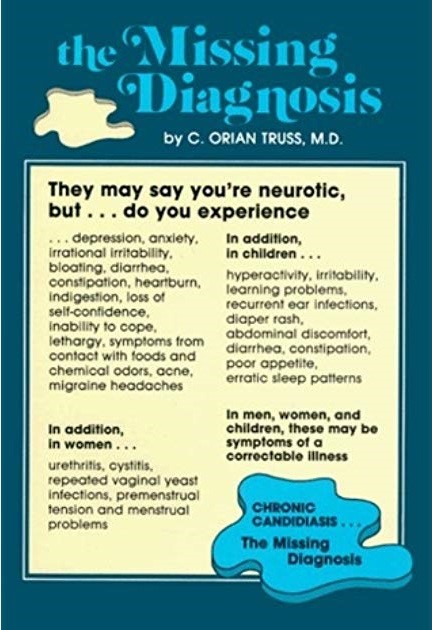
So, what does medical experience teach us about Candida’s relationship to overall physical well being? One physician, Dr. C. Orian Truss, wrote a wonderful paper talking about the relationship between Candida and general health.
Dr. Truss is one of the late Dr. William Crook’s favorite medical doctors to pull experience from. In Dr. Crook’s extensive writings (The Yeast Connection series), he frequently refers to Dr. Truss’ expertise, and opinion, regarding yeast related health issues.
Dr. Truss was one of the pioneers in exposing the medical community, and individuals, to the realities of yeast related health issues. But, regarding the aforementioned paper authored by Dr. Truss, it details the cases of several individuals who had severe mental and physical problems that led them to get medical attention.
The paper was entitled The Role of Candida Albicans in Human Illness.
One of the stories, related by Dr. Truss in his paper, was of a 14 year old girl who had severe mental confusion, inability to learn, and frequently voiced thoughts of committing suicide. Many people may suddenly assume this girl had some type of psychological issue; however, this was not the cause of her mental or physical problems.
These symptoms were very acute (they suddenly, and rapidly, appeared), and had begun five days after the girl had taken tetracycline antibiotics for mild acne. Dr. Truss related her story as follows:
One year ago a girl, also 14 years old, was brought in because of mental confusion and sudden inability to learn, associated with severe depression and frequently voiced thoughts of suicide. This condition had begun abruptly five weeks earlier, on the identical day that for the first time in her life she broke out with severe hives and developed severe asthma.The hives were severe every day and in the two weeks prior to her visit asthma had required hospital emergency room treatment three times. She had experienced menstrual periods only ten days apart after two years of normal 28-day cycles.
http://www.orthomolecular.org/library/jom/1981/toc4.shtml
To summarize the conclusion of this adolescent girl’s story, Dr. Truss analyzed the girl’s medical history and suspected her difficulties to be Candida related. Dr. Truss prescribed her the prescription antifungal nystatin; and, put her on a low carbohydrate, Candida diet.
The girl’s response was remarkable; immediate improvement was seen in her mental well-being, and the hives stopped as well. Her mental health was fully restored some time later, while the girl continued the antifungal therapy. All of the sudden problems this girl had, were totally eliminated by attacking the root cause: systemic yeast overgrowth.
Another story, described by Dr. Truss in his paper, was the story of a 15 year old girl who had anorexia nervosa. The girl’s condition was severe; in nine months she had went from 120 to 59 pounds; and, had not eaten for weeks.
The girl ended up in intensive care and was only alive because of a feeding tube. Fortunately, this girl happened to be symptomatic for oral thrush. When the medical personnel noticed the thrush, they administered a small amount of liquid nystatin.
The next day the young girl finally ate; and, three days later she ate a big Thanksgiving meal. After 3 more weeks had passed, the girl had put on 72 more pounds and made a normal recovery!
Dr. Truss pointed out, that a few isolated incidents may not be able to prove too much; however, he argues that the 100-fold increase (at the time of his writing), of anorexia may also be related to the advent of yeast related illness.
Dr. Truss’ paper also presents other medical findings that seem to make a convincing case for the need to understand systemic yeast colonization effects on the body and mind. Dr. Truss states the following:
If, as I believe, chronic infection with Candida albicans can be responsible for such a variety of symptoms, the legitimate question arises as to why this has remained unrecognized by the internist, allowing the tragic misdirection to futile psychiatric therapy of patients with a medical illness.It seems to me that two factors contribute to this situation. First, the evidence is strong that this yeast lives in virtually every human being… The second factor leading, in my opinion, to the mistaken psychosomatic label is the overall clinical picture.
It could hardly be a more ideal example of psychosomatic theory. Depression and agitation are almost always among the more prominent complaints. Their frequent association with complaints of loss of memory and concentrating ability sets the tone even as the internist begins the exhausting job of listening to symptoms referable to almost any system of the body...
http://www.orthomolecular.org/library/jom/1981/toc4.shtml
How to Naturally Cure Gut Yeast Infections
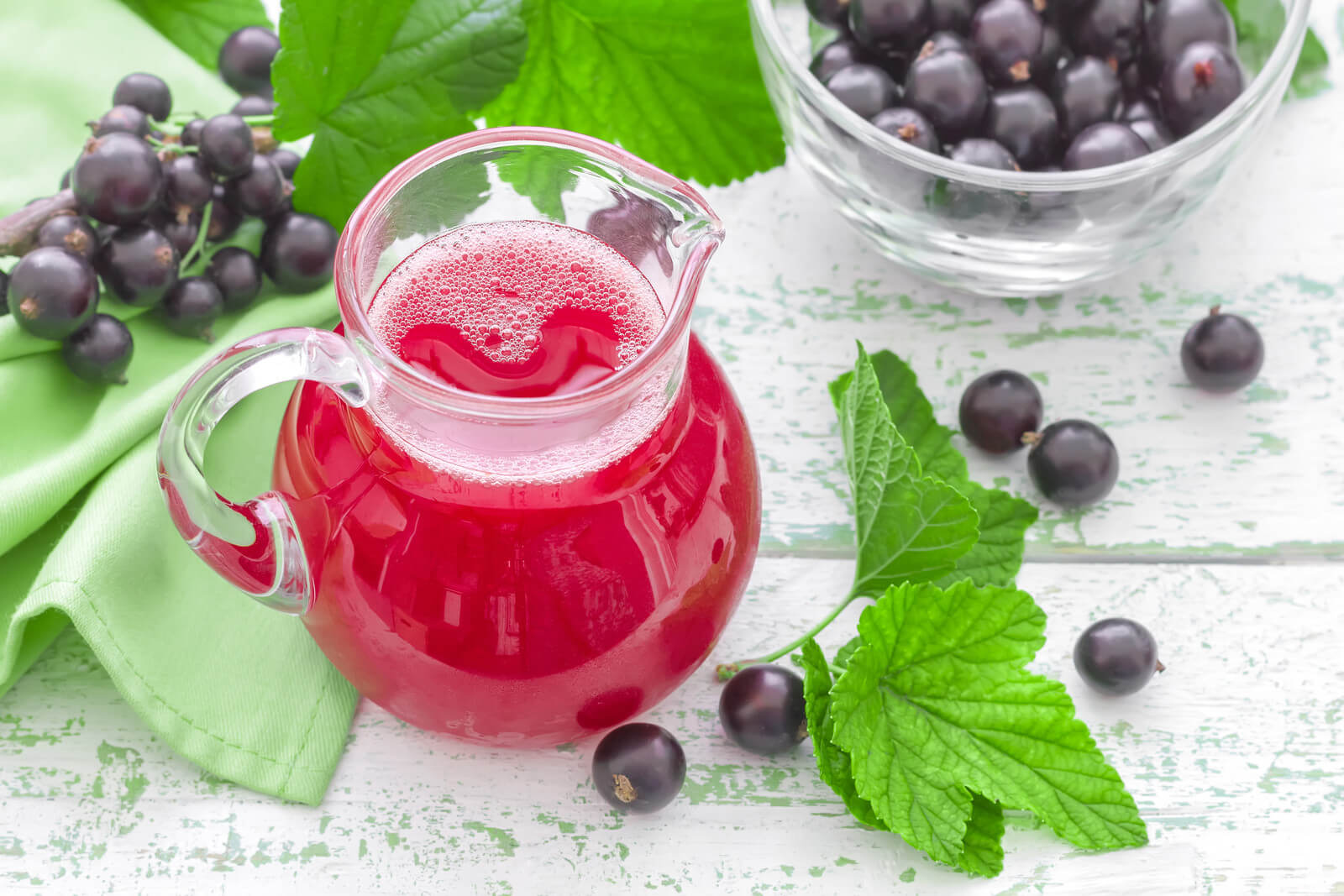
Before you begin a natural treatment program for gut yeast infections, you might want to learn a bit more about some natural items that can kill yeast. Candida Hub has two sections detailing two classes of items that can cure this problem: essential oils and herbs.
If you have the time, consider checking out these sections and getting equipped with the knowledge of these natural medicinal substances: herbs for yeast infection, and essential oil for yeast infection.
The two items you will be primarily employing to clear out a gut yeast infection are garlic and cinnamon. Both garlic and cinnamon have proven antifungal efficacy; and, can effectively stop Candida yeasts. And, as these items are common foods, they should be safe to use in large quantities for nearly all people.
The following are the steps you can employ to naturally treat a gut yeast infection:
- If you can, fast for 24 or more hours and drink mostly blackcurrant (Ribes nigrum) j uice, some unsweetened cranberry juice, and water.
- Once your fast is complete, get some fresh garlic and some empty 00 gelatin capsules. You will need to decide how many cloves you will take at a time. More garlic should mean more Candida killing effect; but, too much garlic might make you sick and hurt your digestive system. So, you might want to start off with a small amount of garlic and increase it as you see fit. Peel the clove(s) of garlic you decided to use, put them into a blender, and puree the garlic cloves. The mixing and crushing of the garlic, will allow alliin and alliinase to mix and form allicin—a powerful antifungal chemical. Let the puree sit for about five minutes, and then start filling the capsules with the mixture until you have no more garlic puree left.
- Fill up an approximately equal number of 00 gelatin capsules with fresh cinnamon powder.
- Swallow all the garlic and cinnamon capsules. You may wish to do this right before you go to bed. Try to not eat or drink anything for about 8 hours. Thus, going to sleep and fasting until morning would be a prudent course of action.
- Repeat the last 4 steps 2 or 3 times a week.
- Stay on a reduced sugar, anti Candida diet while you are performing this cleanse.
- Switch as many fats and oils you use over to coconut oil when possible. Coconut oil is a natural yeast fighting substance and will help to rid the digestive system of Candida.
- Every day, take a probiotic supplement rich in Lactobacillus acidophilus. Probiotics are the natural competitors of yeast, and will help to reduce the sugars available for them to feed on and produce lactic acid—which will acidify the intestines. Acidic environments are not conducive to yeast growth.
According to a study published in the Journal of Antimicrobial Chemotherapy [69.2 (2014): 428-436], cranberry juice should help to stymie the development of Candida biofilm; and, possibly reduce its adhesion to the mucous membranes of the digestive system.
Cranberry juice is acidic and contains arbutin—a natural healer of Candida infections. Additionally, Dr. James Duke, in his book The Green Pharmacy, recommended using cranberry juice for yeast infections.
Another study, conducted on blackcurrant cordials, was published in the Journal of Medicinal Food [6.1 (2003): 57-61]. The study found that blackcurrant cordials, at a dilution of 1:5, would successfully inhibit Candida albicans.
Consequently, these juices—especially blackcurrant juice—will help to fight Candida in the digestive system. One caveat: try and use only unsweetened juices; as excess sugar is not good for controlling yeast in the gut!
As you may have learned, in the herbal remedies or essential oil sections, adding essential oils and other Candicidal herbs to this regimen should greatly enhance its power. Having a variety of herbs, and a few different essential oils, with this treatment will give you a significant edge in your quest for being Candida free.
Dr. James Duke, in his book The Green Pharmacy, recommended mixing antifungal herbs together to create a healing synergy. As Dr. Duke pointed out, studies indicate that mixing these natural remedies creates a synergistic fungicidal effect.
A Natural, 12 Hour Yeast Infection Cure

According to a research paper published in Clinical Microbiology Reviews [12.1 (1999): 80-96], Candida species are quite ubiquitous organisms. Candida are most frequently present in the mouth; and, live in 31% to 55% of healthy people.
The species that causes approximately 70% to 80% of all Candida infections is C. albicans.
The Chinese Journal of Obstetrics and Gynecology [2011 Jul;46(7):496] reports there appears to be a correlation between intestinal Candida infections and vaginal yeast infections. And, this provides a clue, as to why yeast infections in general, can reoccur.
This study states, in 148 cases of vaginal candida infections, 33.1% of the women were infected in both the intestines and vaginal area. The recurrence rate of yeast infections, in women with simultaneous intestinal infection, was significantly higher than for women who did not have an intestinal infection.
This study concluded that vaginal yeast infections are highly associated with simultaneous intestinal Candida infection.
As research appears to indicate, systemic Candida infections can and do happen. A more systemic Candida infection may primarily get a foothold in the intestines; and cause a wide array of problems. If your yeast infections keep happening, a systemic Candida problem may be why.
One woman who suffered from a systemic Candida infection, for about 12 years, was Linda Allen. The systemic Candida infection that attacked Linda caused a wide range of health problems in addition to yeast infections. Some of these problems, Linda describes in her own words in the following quote:
To be honest, it was hard to pinpoint exactly what was wrong: I wasn’t really sick, but I wasn’t really well either. I had listlessness, fatigue, brain fog, stomach ailments, unexplained rashes, skin infections, and so on. It seemed like every day brought a new challenge.
My energy was sapped and I felt exhausted, which affected my grades and put a big dent in my social life.
Linda Allen’s symptoms included an embarrassing vaginal discharge, severe itching, and burning sensations. Her infections were difficult to deal with, and Linda’s health problems cost her financially as well.
Linda states these infections of Candida can become excruciating when they happen as frequently as a menstrual period.
Yet, Linda spent a great deal of time in research; and even questioned health professionals who were kind enough to share some time with her. Linda even tried an array of purported "cures." Although it took a while, eventually, Linda put together a natural treatment plan she hoped would solve her Candida situation.
After spending about a year refining her new approach, Linda tried her system on herself. It worked amazingly well. Linda even returned to a few medical doctors to get tested for the presence of infections. These tests revealed all indicators of infection had vanished! Linda was indeed well again, after such a long, difficult journey.
Linda has since published a book detailing how to copy her success. She also includes a 12 hour yeast infection cure that can get rid of a superficial (such as a genital yeast infection or oral thrush) yeast infection in about 12 hours.
Linda’s publisher protects those who get her book with a 60 day, 100% money back guarantee. Linda’s publisher, a subsidiary of the United States based firm Keynetics Incorporated, is a reputable digital retailer that has been around for a long time.
They have great customer service, and make getting a full refund on Linda’s book quick and easy. If you’re not satisfied, you can quickly get all your money back.
If you would like to learn more about Linda’s journey to freedom from Candida, see reviews of others who tried her natural system, or find out more about her efficacious book; you can find more information at Linda Allen’s website.
Author: Mr. Nicholas Gross

Nick Gross is a natural medicine enthusiast who has been researching and writing about natural medicine since 2008. Nick is primarily a web developer but also researches and authors written and video content about natural health. Nick has a bachelor’s degree in Management Information Systems from the University of Northern Iowa.
Disclaimer
The information on this website is not a prescription for anyone. This information is for informational or educational purposes only, and is not a substitute for professional medical advice or consultations with healthcare professionals.
Affiliate Disclosure
Some of the links provided on this website are affiliate links. When a purchase is made through these links, Candida Hub earns money from commission. This helps to keep the website up and helpful to people for free. Thank you for any support!
Stay Up to Date
If you enjoyed this article, consider following / liking our Facebook page. This page is primarily utilized to alert followers of new articles that are put on Candida Hub. Candida related news is also discussed. While you are there, you can see what has been more recently added to Candida Hub.
SOURCES:
- http://dx.doi.org/10.1099/00222615-13-1-45 — Stephen, Alison M., and J. H. Cummings. "The microbial contribution to human faecal mass." Journal of Medical Microbiology [13.1 (1980): 45-56].
- http://www.ncbi.nlm.nih.gov/pmc/articles/PMC88907/ — Fidel, Paul L., Jose A. Vazquez, and Jack D. Sobel. "Candida glabrata: review of epidemiology, pathogenesis, and clinical disease with comparison to C. albicans." Clinical microbiology reviews [12.1 (1999): 80-96].
- Crook, William G. The yeast connection: a medical breakthrough. Vintage, 2010. (Good Version of this book here: Explore at Google Books)
- http://dx.doi.org/10.1016/j.mib.2011.07.015 — Kumamoto, Carol A. "Inflammation and gastrointestinal Candida colonization." Current opinion in microbiology [14.4 (2011): 386-391]. Full Text Available Here
- http://dx.doi.org/10.1016/j.jhin.2009.02.009 — Miranda, L. N., et al. "Candida colonisation as a source for candidemia." Journal of Hospital Infection [72.1 (2009): 9-16]. PDF Available Here
- http://www.ncbi.nlm.nih.gov/pubmed/342194 — Iwata, K. "Toxins produced by Candida albicans." Contributions to microbiology and immunology [4 (1976): 77-85].
- Crook, William Grant. The Yeast Connection and the Woman. Professional Books, 1997.
- http://dx.doi.org/10.1086/528990 — Jawhara, Samir, et al. "Colonization of mice by Candida albicans is promoted by chemically induced colitis and augments inflammatory responses through galectin-3." Journal of Infectious Diseases [197.7 (2008): 972-980]. Full Text Available Here
- http://dx.doi.org/10.1093/jac/dkt398 — Rane, Hallie S., et al. "Cranberry-derived proanthocyanidins prevent formation of Candida albicans biofilms in artificial urine through biofilm-and adherence-specific mechanisms." Journal of Antimicrobial Chemotherapy [69.2 (2014): 428-436].
- http://dx.doi.org/10.1089/109662003765184750 — Cavanagh, Heather MA, Michael Hipwell, and Jenny M. Wilkinson. "Antibacterial activity of berry fruits used for culinary purposes." Journal of medicinal food [6.1 (2003): 57-61].
- http://www.orthomolecular.org/library/jom/1981/toc4.shtml — Truss, C. Orian. "The role of Candida albicans in human illness." J Orthomol Psychiatry [10.4 (1981): 228-238]. PDF Available Here
- Google Books — Duke, J. A. (1997). The green pharmacy: New discoveries in herbal remedies for common diseases and conditions from the world's foremost authority on healing herbs. Emmaus, Pa: Rodale Press.
- https://pubmed.ncbi.nlm.nih.gov/22041440/ -- Lin XL, Li Z, Zuo XL. "Study on the relationship between vaginal and intestinal candida in patients with vulvovaginal candidiasis." Chinese Journal of Obstetrics and Gynecology (Zhonghua fu chan ke za zhi). [2011 Jul;46(7):496].






